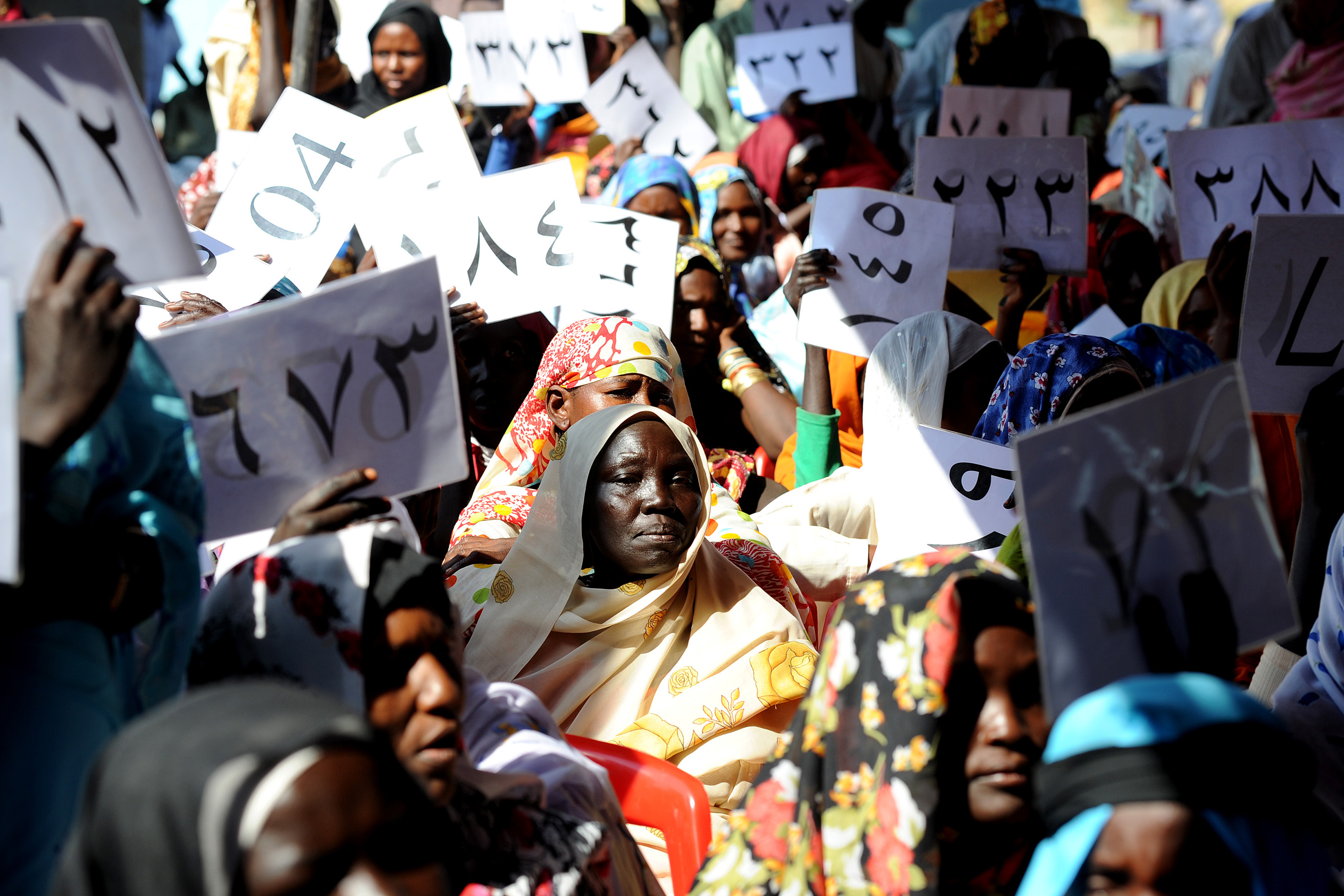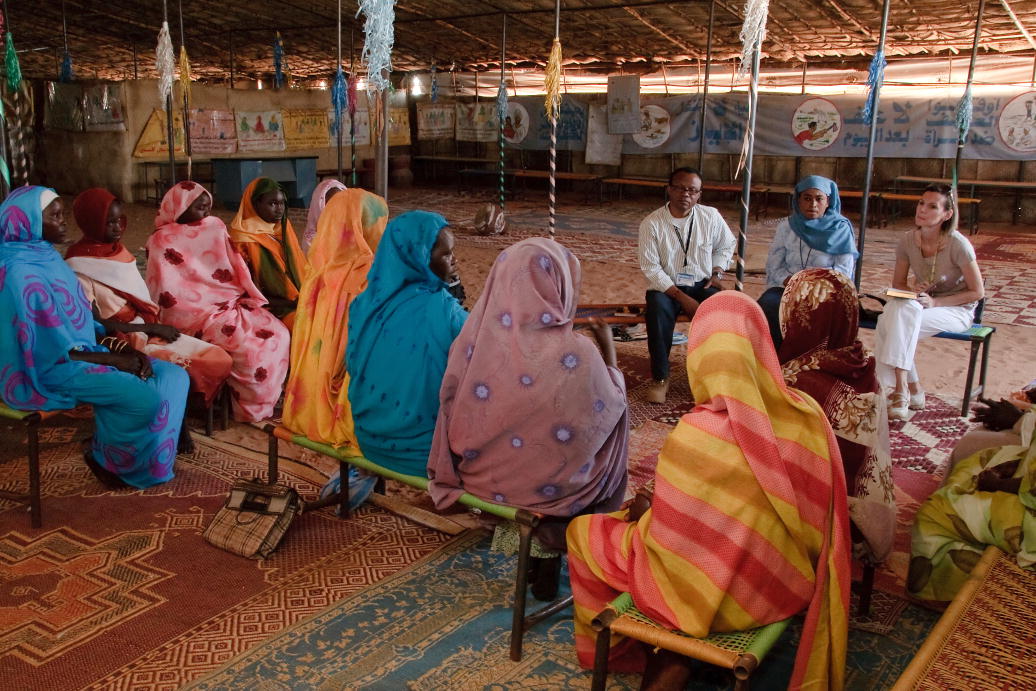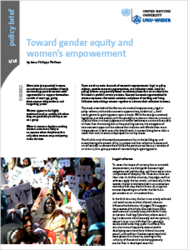Policy Brief
Toward gender equity and women’s empowerment
There are three main channels of women’s empowerment: legal or policy reforms, outside economic opportunities, and collective action. Legal (or policy) reforms are generally based on statutory laws that enact rules to be followed or prohibit certain practices. External economic opportunities for women represent alternative activities and places of working and living. Collective action brings women together to advance their collective interests.
Alternative (prospective) incomes earned external to traditional family surroundings provide women with opportunities to support themselves outside of marriage, giving them greater independence and bargaining power
Women appear to be highly motivated to play a public role when they are given the possibility to act as a group
When it comes to decision-making women seem more likely to co-operate when they know that only other women are participating in the decision
The mechanism behind the first two channels of empowerment, legal or policy reforms and outside economic opportunities, is identical — both confer greater bargaining power upon women. While the new (pro-women) legislation provides women with the possibility to move or threaten to move to a judicial domain where judgments or conflict settlements are more favourable to them than the existing law or the prevailing custom, the emergence of new economic opportunities reduces their isolation and affords them more independence. In both cases this should result in women being better able to assert their own interests and perspectives on key issues.
The third channel of women’s empowerment lies in the building up and strengthening of women’s ability to understand their collective interests and act collectively to advance them. Unlike the previous two factors, it consists of an internal, intra-group process of accumulating bargaining power.
Legal reforms

To assess the impact of statutory law on women’s empowerment, we distinguish between legal categories and explicit rules, and the interpretations and practices of everyday life. Three situations can then arise. In the first situation, the judges and law enforcers apply the law strictly and neutrally. In the second, the law is implemented in an overzealous manner, which may work in favour of, or against women depending on whether the law has a pro-women or an anti-women bias.
In the third situation, the law is not strictly enforced and social norms or other informal rules can influence the behaviour of judges. This suggests the presence of multiple rules and the possible coexistence of statutory laws and informal rules or customs. Such legal pluralism, where several legal orders exist simultaneously and are optional, means it is up to an individual (or a group) to decide which order they prefer to enforce. This situation is most frequently encountered in developing countries where informal customs prevail, and traditional leaders sometimes hold more power than the state, resulting in the authority of the central state being generally weaker than in developed countries.

Access to new outside opportunities for women
There are many examples illustrating how when women’s outside economic opportunities are expanded, their wellbeing can be enhanced. For example, women are better able to initiate divorce or reduce the risk of repudiation if they have alternative incomes that allow them to subsist outside marriage. Social norms that are sexually repressive for women also tend to become less common when the economic environment improves and women’s economic mobility is increased. And the age at which girls marry can be raised if schooling is lengthened and promises attractive future incomes.
In all these cases the mechanism is the same: alternative (prospective) incomes earned outside traditional family surroundings provide women with a credible threat to leave if their voice is not heard, increasing their bargaining strength.
Women-centered collective initiatives
The three channels of women’s empowerment — legal or policy reforms, outside economic opportunities, collective action — are complementary and should be used simultaneously where possible
The advantage of empowerment through outside economic opportunities is that it does not confront men’s power in a way that looks ill-intended
Where law enforcement is weak and there is strong opposition to change, encouraging outside economic opportunities should be prioritised. Legal reforms and collective action will come later, driven by the structural forces created through economic opportunities
In addition to changes in the laws, policies and economic opportunities, women can come together to act collectively. Research in Liberia shows women are more likely to contribute to public goods (in this case a small-scale development project) when they know that only other women are participating in the decision. Most of the composition effect seems to come from women in the all-women group putting more intrinsic weight on co-operation, regardless of value for the public good, fear of discovery, or desire to match others’ behaviour.
Individuals may have a stronger motivation to act when they see themselves as representatives of a community of women. Social identity based on gender seems to exert a significant influence on the way women behave when asked to make choices between private and public goods. This is not to say that women are more community-minded than men, per se — what it does suggest is that women are highly motivated to play a public role when they are given the possibility to act as a group. When women as a group take on a more active role in the community, their mindset is also changed in the sense that their expectations are raised.
 Join the network
Join the network